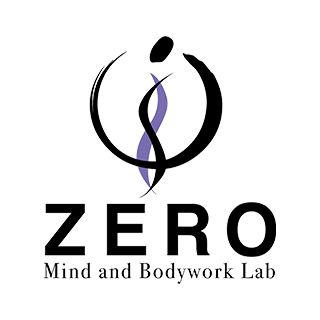Introduction
Hello, I’m Hidefumi Otsuka, offering Rolfing sessions in Shibuya, Tokyo.
I am currently participating in the Advanced Training (AT) for Rolfing, taught by Ray McCall and Hiroyoshi Tahata. We have completed the first four days of the training, from Tuesday, April 8 to Friday, April 11, 2025.

In this post, I would like to reflect on the first four days of AT, focusing particularly on what I learned from Tahata on the third day.
What I learned?
On April 11, 2025, we finished the initial four days of AT. First, I would like to highlight what we learned during the week.
Day 1 (April 8) — The History of AT and “Three Key Questions”
On the first day (Tuesday, April 8), we studied the history and significance of AT, and discussed how to adapt the Ten Series learned in Basic Training (BT) to meet individual needs.
We were introduced to Jeff Maitland’s framework of “Three Questions”:
- How do you begin?
- What do you do next?
- When do you finish?
In particular, regarding how to start a session, we discussed the importance of:
Achieving a neutral (balanced, centered) state of mind and body
Trusting the body’s self-regulatory capacity
Creating a safe and secure environment
Day 2 (April 9) — Deepening the Concept of Neutrality (1): “Intention” and “Intentionality”
On the second day (Wednesday, April 9), we further explored the concept of neutrality.
We discussed whether practitioners should approach sessions with intention or with intentionality.
We learned how the practitioner’s mindset and bodily state can significantly affect the quality of a session.
Day 3 (April 10) — Deepening the Concept of Neutrality (2): HARA, Ma/Yield, and the Field
From the third day (Thursday, April 10), we began practicing sessions with each other.
Before starting, we received a lecture from Tahata, offering important insights into understanding neutrality through the body. After this, students were paired up to start their three-session series.
Day 4 (April 11) — Beginning the Five-Session Series with External Clients
On the fourth day (Friday, April 11), we discussed how to apply what we learned in BT to offer sessions tailored to each client. Tahata-san summarized the key points on a whiteboard. In the afternoon, we divided into two groups to practice sessions with external clients.
In this post, I would like to introduce what I learned from Tahata on the third day.
In the next blog, I will focus on the learning from the fourth day.
Neutrality — The Concept of HARA
On the third day of AT, we received our first lecture from Tahata-san. Although his base is in Daikanyama and mine is in Shibuya — geographically close — this was the first opportunity for me to hear his wisdom directly, despite having offered Rolfing sessions myself for over ten years.
The theme was what neutrality means in bodywork, with a particular focus on HARA, a key concept in the Yield (Ma) work Tahata practices.
Neutrality and “Way of Being” — Facilitating Emergent Change
When the practitioner can embody neutrality, the body axis organizes naturally, and the appropriate muscular tonus (tension) develops. Furthermore, by maintaining an appropriate distance from the client, the client’s body can feel a deep sense of safety.
As a result, a coherent field is created where the client resonates with the practitioner’s way of being. The client is then prepared for self-regulation, and what I previously described as emergent (fruitional) change can arise.
How to Maintain Neutrality — Lessons from Basic Training
While tracking bodily changes, how can we maintain a neutral state?
In BT, we learned various methods, such as:
Being aware of the practitioner’s own body axis (LINE)
Focusing on the practitioner’s own back (posterior awareness)
Balancing the “changes we create” and the “changes that arise naturally”
The Concept of HARA — Pelvic Tensegrity Structure
Tahata’s exploration of neutrality began with awareness of the Tanden (lower abdomen).
Through trial and error, he discovered that focusing on the space around the second or third vertebrae above the coccyx — what he calls HARA — helped to organize the body axis and allow the entire body to relax.
Why wasn’t focusing on the traditional Tanden sufficient?
Because clients in sympathetic overdrive (“cooking” state, as it is called in the European Rolfing Association) often could not respond well.
By focusing on HARA while being aware of the pelvic tensegrity structure,
it became easier to enter a neutral state, even when working with clients in overactivated sympathetic states.
Fascia and Tensegrity — The Foundation of Rolfing
Here, let’s briefly summarize two important concepts in Rolfing: fascia and tensegrity.
What Is Fascia?
In Rolfing, we approach the fascia — the thin membranes that wrap and connect the entire body — to organize the structure.
Fascia covers muscles, bones, and internal organs.
Its roles include:
- Connecting (linking muscles to muscles and muscles to bones)
- Protecting (providing cushioning against external forces)
- Shaping (supporting tensegrity structures)
- Communicating (housing rich networks of nerves and sensory receptors)
What Is Tensegrity?
When it comes to shaping, the body maintains its form through a web-like structure called tensegrity.
Coined by architect Buckminster Fuller, tensegrity is a combination of “tension” and “integrity.”
Tensegrity is a structure stabilized by the balance of tension and compression.
Thanks to tensegrity principles, our bodies can maintain form and function even under external pressures.
Thus, by adjusting the fascia, we can realign the body’s skeletal and structural organization.
Awareness of HARA — True Pelvic Tensegrity
The reason for discussing tensegrity is that HARA is also surrounded by bones and organs and follows the same structural principles.
By focusing on HARA and sensing support from surrounding fascial structures —
what Tahata calls True Pelvic Tensegrity — we can achieve:
“Optimal tonus = a healthy, balanced state.”
This creates a middle ground between sympathetic overdrive (Fight or Flight) and collapse (Freeze), lowering the basic defensive response of the body.
By centering on the true pelvic tensegrity and maintaining awareness of the whole-body tension, we can sustain neutrality more easily.
How to Maintain “Ma” — and Tahata’s External Client Demo
One of the most interesting aspects of Tahata’s work is the emphasis on maintaining “Ma” (space) while remaining aware of the true pelvic tensegrity.
In practice:
- The practitioner moves around the client lying supine,
- Communicating with the client’s field,
- And finding the “first position” — the place where the client’s body feels most at ease.
This allows the client to prepare for self-regulation and leads naturally to change.
At the external client demonstration,
we witnessed remarkable transformations with Tahata’s neutral presence.
Despite soft and subtle touch, the entire body shifted —
a stark contrast to the more direct pressure approaches learned in BT.
Practice — Blending HARA, Ma, and Previous Techniques
After Tahata’s lecture, we practiced sessions with each other.
We attempted Tahata’s approach, integrating it when necessary with the traditional fascia-directed techniques.
The more the practitioner trusted the client’s self-regulatory ability,
the greater the body’s spontaneous changes — and surprisingly, less intervention was needed to achieve fascial release.
I realized that I want to continue exploring and incorporating this new approach in my future advanced sessions.
Conclusion
In this post, I reflected on the first four days of AT, focusing particularly on what I learned from Tahata on the third day. I explored the core ideas of his Yield Work — HARA and Ma — and how they relate to maintaining a neutral state.

